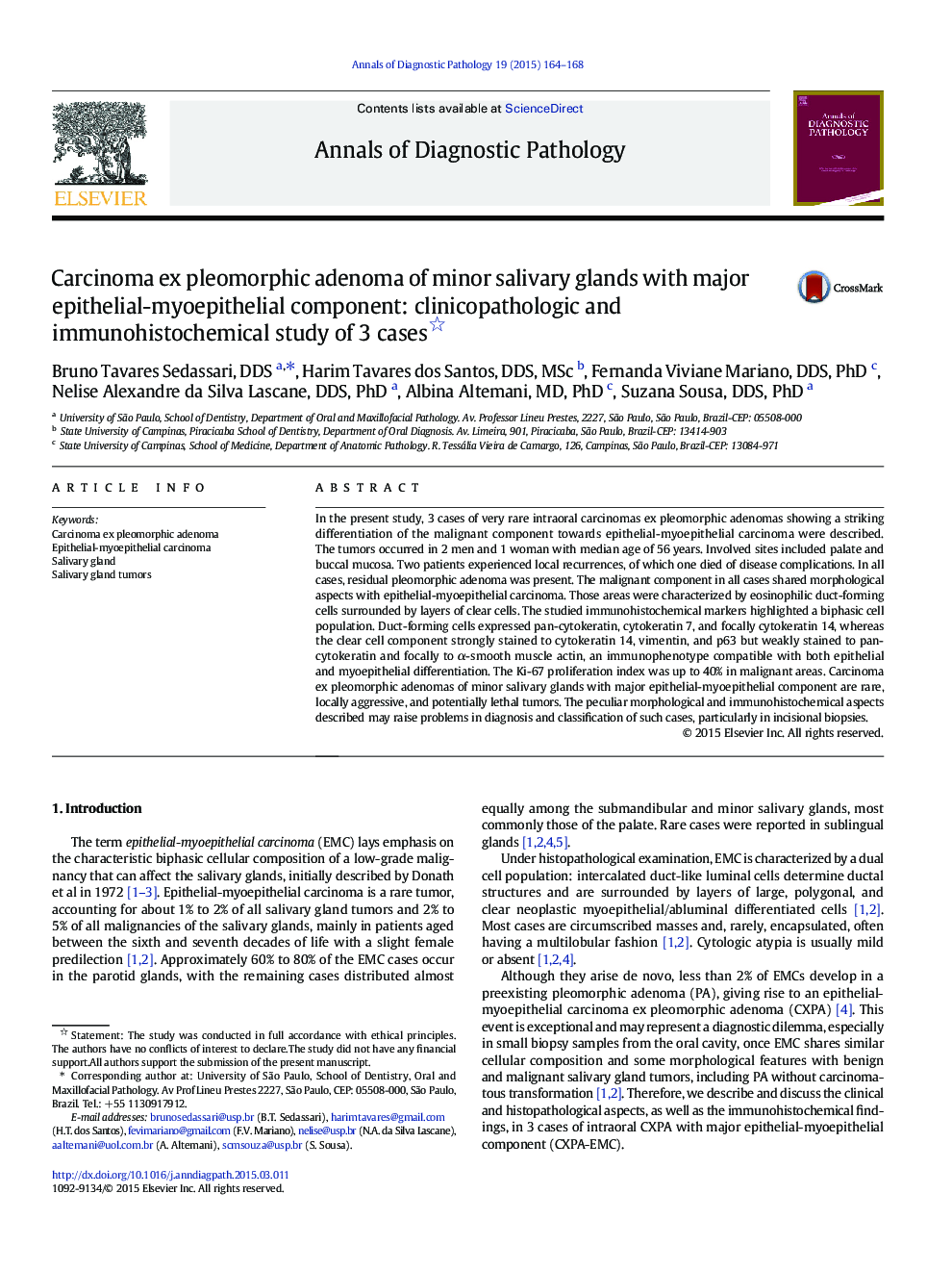| Article ID | Journal | Published Year | Pages | File Type |
|---|---|---|---|---|
| 4129801 | Annals of Diagnostic Pathology | 2015 | 5 Pages |
In the present study, 3 cases of very rare intraoral carcinomas ex pleomorphic adenomas showing a striking differentiation of the malignant component towards epithelial-myoepithelial carcinoma were described. The tumors occurred in 2 men and 1 woman with median age of 56 years. Involved sites included palate and buccal mucosa. Two patients experienced local recurrences, of which one died of disease complications. In all cases, residual pleomorphic adenoma was present. The malignant component in all cases shared morphological aspects with epithelial-myoepithelial carcinoma. Those areas were characterized by eosinophilic duct-forming cells surrounded by layers of clear cells. The studied immunohistochemical markers highlighted a biphasic cell population. Duct-forming cells expressed pan-cytokeratin, cytokeratin 7, and focally cytokeratin 14, whereas the clear cell component strongly stained to cytokeratin 14, vimentin, and p63 but weakly stained to pan-cytokeratin and focally to α-smooth muscle actin, an immunophenotype compatible with both epithelial and myoepithelial differentiation. The Ki-67 proliferation index was up to 40% in malignant areas. Carcinoma ex pleomorphic adenomas of minor salivary glands with major epithelial-myoepithelial component are rare, locally aggressive, and potentially lethal tumors. The peculiar morphological and immunohistochemical aspects described may raise problems in diagnosis and classification of such cases, particularly in incisional biopsies.
